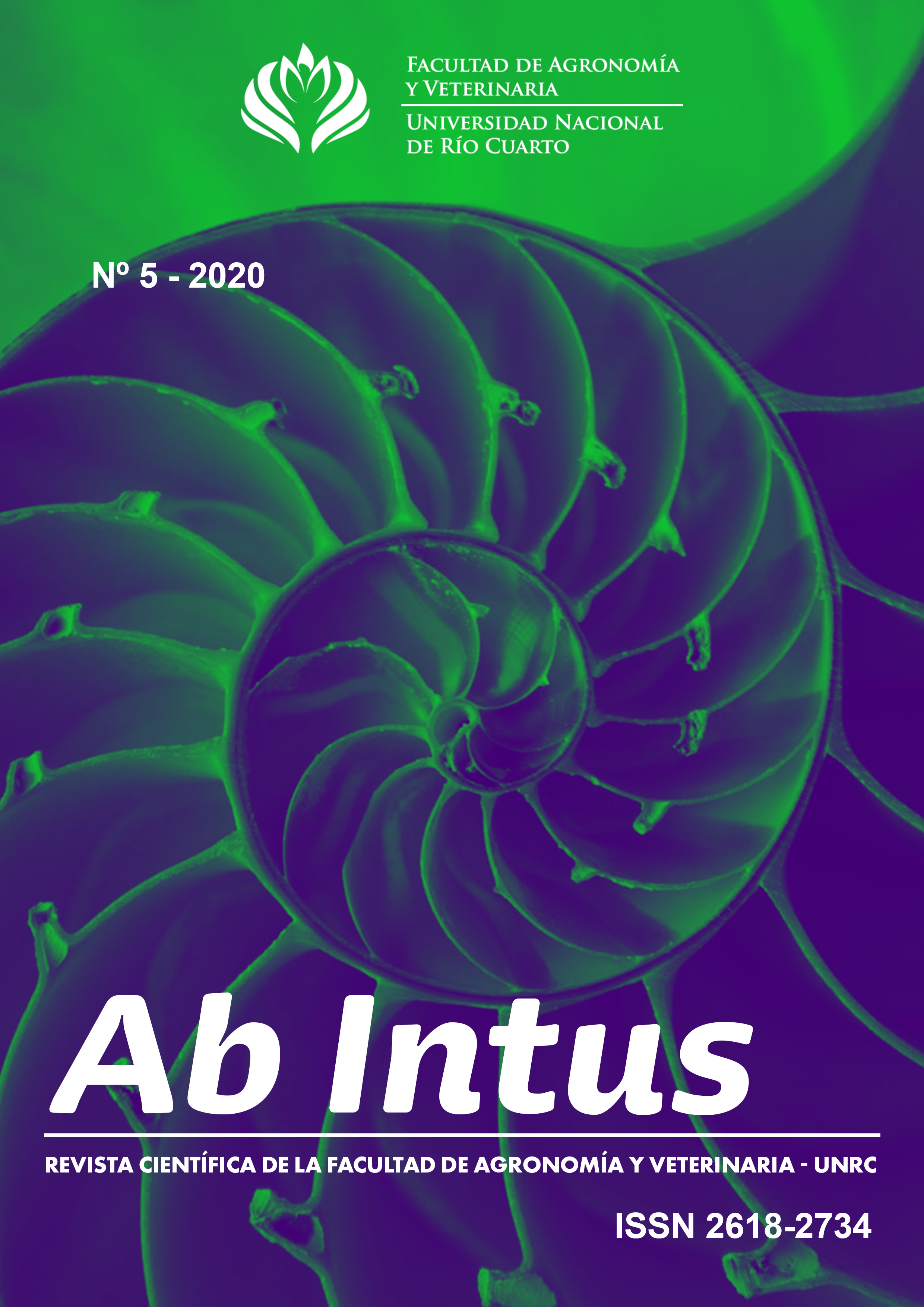Análisis de la distribución temporal de la concentración de Clorofila-a en el embalse Río Tercero, Córdoba, Argentina
Abstract
En los últimos años, la contaminación y la eutrofización de los recursos hídricos se ha convertido en uno de los problemas ambientales más importantes de mundo, ya que pone en riesgo tanto la cantidad como la calidad del agua para consumo humano. La concentración de Clorofila-a (Cl-a) es un buen indicador de la calidad del agua. El objetivo de este trabajo fue generar una serie de tiempo a partir de un modelo estadístico basado en datos de campo e información satelital de MODIS, para determinar y predecir la distribución temporal de la Cl-a en el embalse Río Tercero. Se obtuvo un modelo de regresión lineal (R2=0,66), el cual tiene en cuenta la relación entre bandas 1 y 2 del satélite MODIS. Con dicho algoritmo, se obtuvo un valor de Cl-a para cada día desde Enero de 2009 a Septiembre de 2019. Se generó una serie de tiempo para el reservorio bajo estudio. Este trabajo es una contribución relevante para estudiar la evolución temporal de la contaminación del agua en reservorios.
Downloads
References
APHA, A., (2000). ASCE. “Standard Methods for Water and Wastewater Examination and Test”. APHA, AWWA, ASCE, New York.
Bonansea, M., Rodriguez, M. C., Pinotti, L., & Ferrero, S. (2015). Using multi-temporal Landsat imagery and linear mixed models for assessing water quality parameters in Río Tercero reservoir (Argentina). Remote Sensing of Environment, 158, 28-41.
Ferral, A., Solis, V., Frery, A., Orueta, A., Bernasconi, I., Bresciano, J., & Scavuzzo, C. M. (2017). Spatio-temporal changes in water quality in an eutrophic lake with artificial aeration. Journal of Water and Land Development, 35(1), 27-40.
Germán, A., Tauro, C., Scavuzzo, M. C., & Ferral, A. (2017). Detection of algal blooms in a eutrophic reservoir based on chlorophyll-a time series data from modis. In 2017 IEEE International Geoscience and Remote Sensing Symposium (IGARSS) (pp. 4008-4011). IEEE.
Khan, I., & Zhao, M. (2019). Water resource management and public preferences for water ecosystem services: a choice experiment approach for inland river basin management. Science of the Total Environment, 646, 821-831.
Ledesma, M. M., Bonansea, M., Ledesma, C. R., Rodríguez, C., Carreño, J., & Pinotti, L. (2019). Estimation of chlorophyll-a concentration using Landsat 8 in the Cassaffousth reservoir. Water Supply, 19(7), 2021-2027.
Li, Y., Zhang, Y., Shi, K., Zhu, G., Zhou, Y., Zhang, Y., & Guo, Y. (2017). Monitoring spatiotemporal variations in nutrients in a large drinking water reservoir and their relationships with hydrological and meteorological conditions based on Landsat 8 imagery. Science of the Total Environment, 599, 1705-1717.
Li, Z., Ma, J., Guo, J., Paerl, H. W., Brookes, J. D., Xiao, Y., ... & Lunhui, L. (2019). Water quality trends in the Three Gorges Reservoir region before and after impoundment (1992–2016). Ecohydrology & Hydrobiology, 19(3), 317-327
Neeley, S. (2018, December). Analyzing earth data with NASA’s AppEEARS tool to improve research efficiency. In AGU Fall Meeting Abstracts.
Prosperi, C. (2005). Evaluación de la Contaminación y Eutroficación de Aguas Superficiales de la Provincia de Córdoba.
Rodríguez, C., Bonansea, M., Bonatto, F., Reynoso, V., Prosperi, C., Mancini, M. & Ledesma, C. (2007). Remote sensing-GIS to predict on the risk of eutrophication in aquatic systems. Space Technology-based tele-health proyect initiatives in Latin America and the Caribbean. United Nations Programme on Space Applications, 28-30.
Shi, K., Zhang, Y., Zhu, G., Qin, B., & Pan, D. (2018). Deteriorating water clarity in shallow waters: Evidence from long term MODIS and in-situ observations. International journal of applied earth observation and geoinformation, 68, 287-297.
Downloads
Published
How to Cite
Issue
Section
License
Copyright (c) 2023 Ab Intus

This work is licensed under a Creative Commons Attribution-NonCommercial 4.0 International License.


















